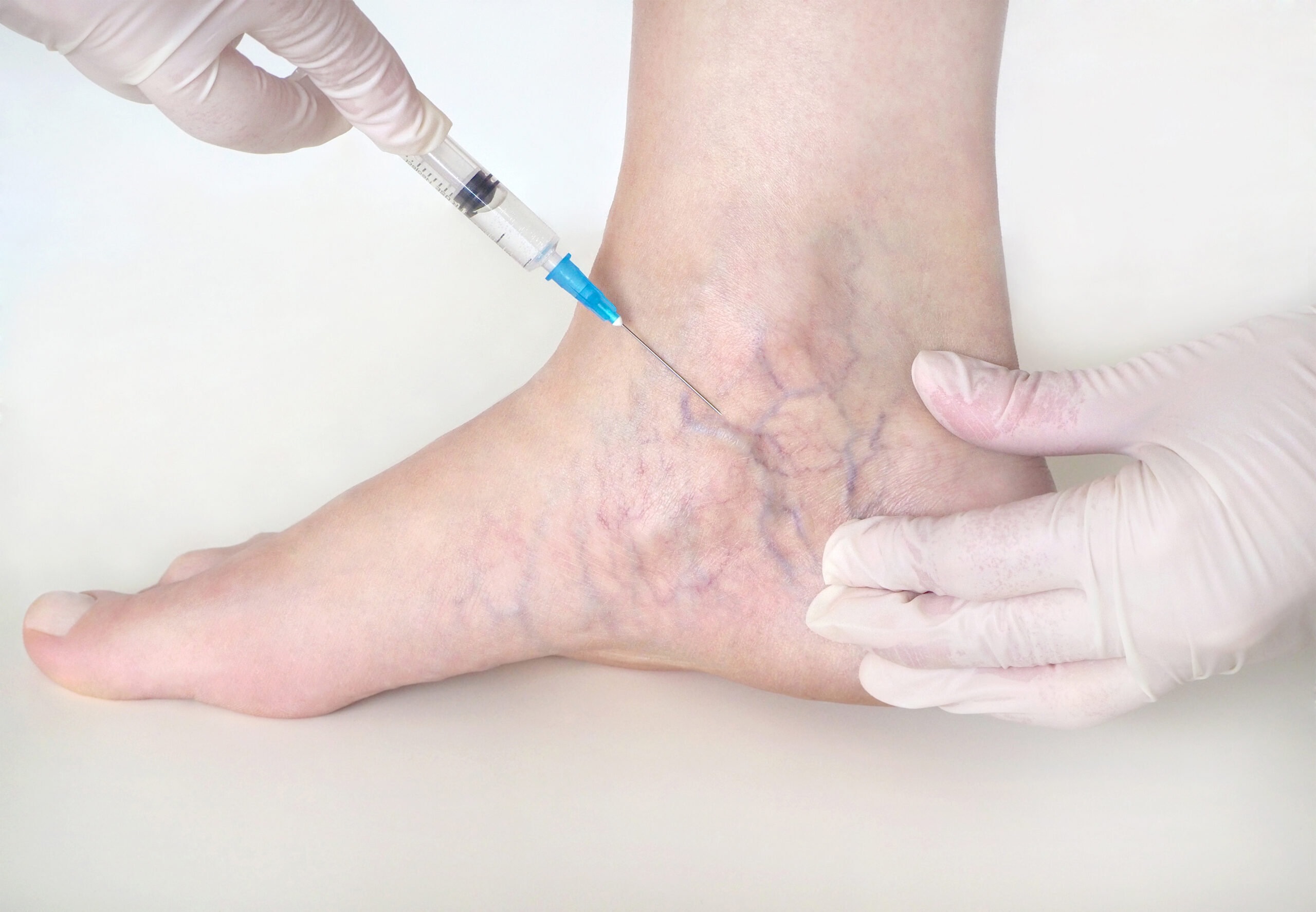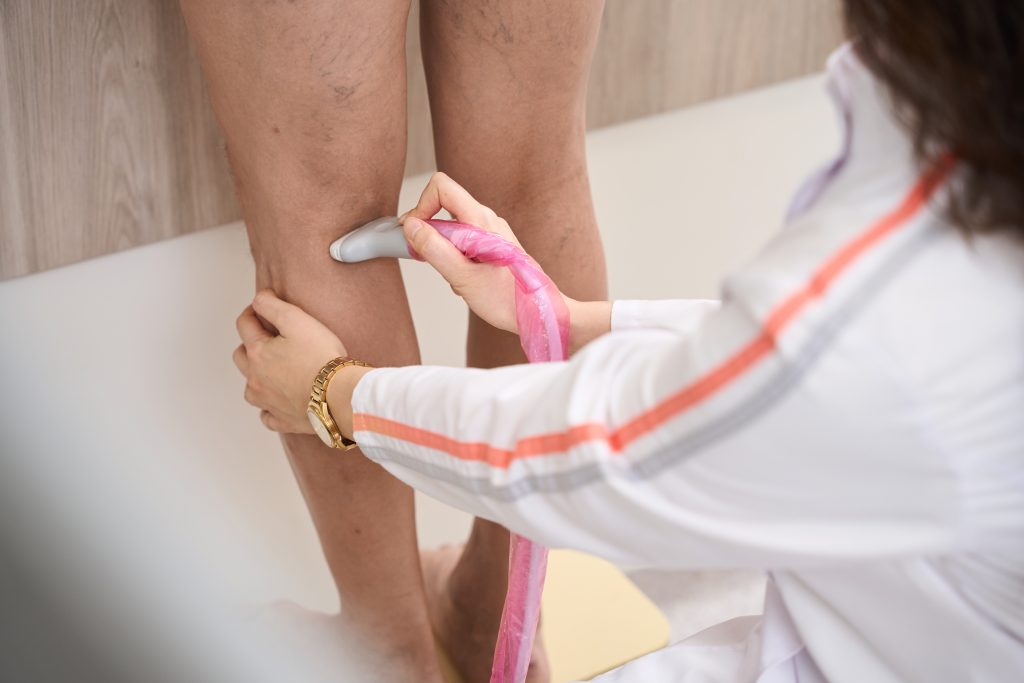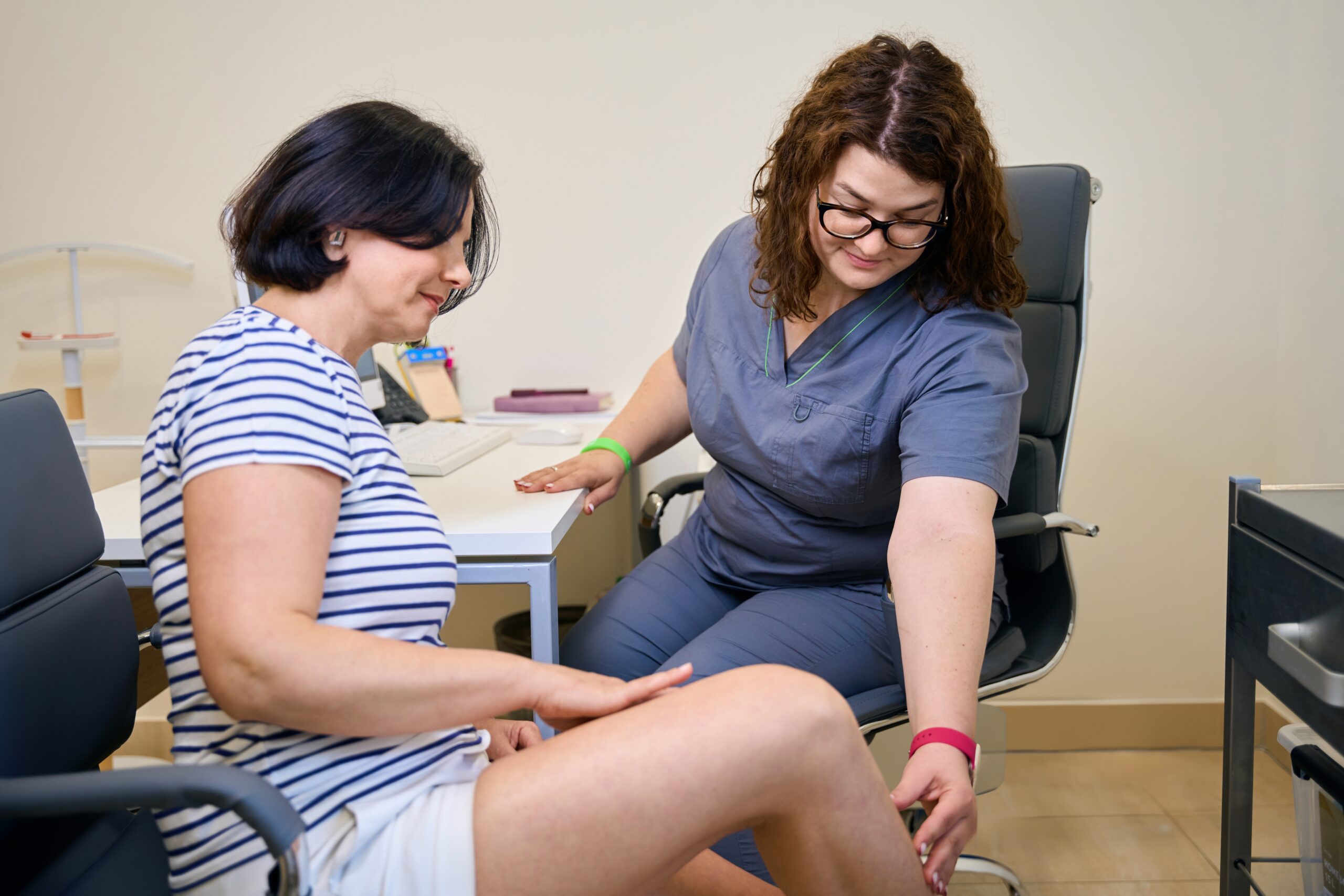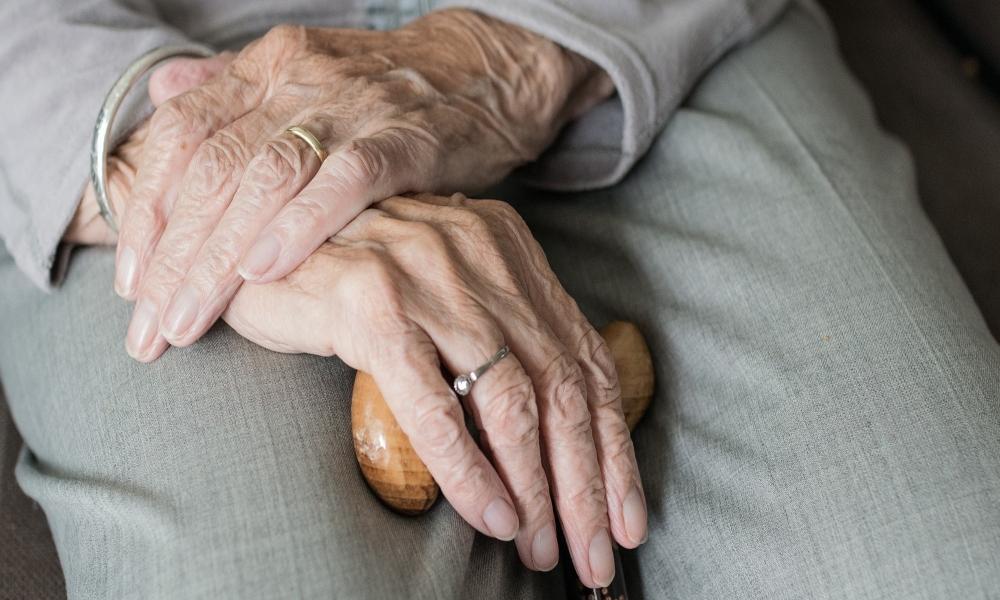
Why Sclerotherapy Is Often the First-Line Treatment for Spider Veins
Spider veins often appear as fine red, blue, or purple lines just beneath the skin, causing many people to feel self-conscious or uncomfortable. Fortunately, modern treatment

Spider veins and varicose veins are common vein conditions that affect millions of people every day. While they may not always cause significant medical issues, they can cause physical discomfort in some. Of course, they also tend to be a source of embarrassment for a lot of people. But what’s important to note is that in some cases, these veins can lead to more serious complications. At Vein-ity, we specialize in providing personalized care for patients suffering from spider veins and varicose veins, helping to restore their confidence and vein health.
Spider veins and varicose veins are types of venous disorders caused by weakened or damaged vein valves. Spider Veins are smaller, red, blue, or purple veins that appear close to the surface of the skin. They often form in a web-like pattern and are most commonly found on the legs and face. Varicose Veins are larger, swollen veins that can be dark blue or purple in color. They appear twisted and bulging, and they often occur on the legs and feet.
In this blog post, we’ll explore the factors that contribute to the development of these veins, and provide you with our top tips for managing them effectively.
Several factors can contribute to the development of spider veins and varicose veins, including:
If lifestyle changes alone aren’t enough to manage spider veins and varicose veins, there are several effective treatments available at Vein-ity:
Radiofrequency Ablation (RFA)
Radiofrequency ablation (RFA) is a minimally invasive procedure used to treat varicose veins. During RFA, a thin catheter is inserted into the affected vein, and radiofrequency energy is applied to heat and close off the vein. This process causes the vein to collapse and be absorbed by the body over time, redirecting blood flow to healthier veins. It is a highly effective treatment for varicose veins and is often recommended for patients with larger veins that cannot be treated with sclerotherapy or other less invasive techniques.
VenaSeal
VenaSeal is a virtually painless closure system that uses medical adhesive to seal varicose veins, providing a comfortable treatment experience and rapid recovery time. VenaSeal provides a modern solution by directly targeting the underlying problem with precision and care, helping the patient achieve smoother, healthier-looking legs. During the VenaSeal procedure, a small catheter is used to deliver a medical adhesive directly into the affected vein. This adhesive seals the vein shut, causing it to collapse and gradually fade from view.
Varithena
Varithena is an innovative microfoam treatment that effectively closes varicose veins, minimizing discomfort and maximizing results for smoother, healthier-looking legs. Varithena is a groundbreaking treatment that uses a specialized foam to close off varicose veins. This minimally invasive procedure involves injecting the foam directly into the affected vein, where it fills the vein and causes it to collapse. One of the key advantages of Varithena is its ability to treat a wide range of varicose veins, offering both improved appearance and relief from symptoms – with minimal downtime.
Ultrasound-guided sclerotherapy
Ultrasound-guided sclerotherapy is a minimally invasive treatment used to target and close off varicose veins, particularly those that are deeper or less visible. During the procedure, a special solution called a sclerosant is injected into the affected vein using a fine needle.The sclerosant irritates the vein walls, causing them to collapse and eventually be absorbed by the body. Ultrasound imaging is used in real-time to precisely guide the needle and ensure accurate injection into the targeted vein. This technique allows for more precise treatment of veins that are not easily accessible, and it is highly effective in improving the appearance of varicose veins and reducing symptoms such as swelling and discomfort.
Cosmetic sclerotherapy
The main difference between traditional sclerotherapy and cosmetic sclerotherapy is the type of veins treated and the purpose of the treatment. Traditional sclerotherapy targets medium to large varicose veins that cause discomfort and swelling, aiming to improve both appearance and circulation. In contrast, cosmetic sclerotherapy focuses on smaller spider veins, primarily for aesthetic purposes, with minimal medical concerns. While both treatments use a sclerosant to collapse the veins, traditional sclerotherapy addresses more significant vein issues, whereas cosmetic sclerotherapy is used to improve the appearance by treating veins that are more superficial.
While spider veins and varicose veins are often seen as a cosmetic concern, leaving them untreated can lead to complications such as:
Once you’ve received treatment for spider veins or varicose veins, it’s essential to continue with aftercare to ensure optimal results and prevent future vein problems. Here are some tips:
At Vein-ity, we specialize in the diagnosis and treatment of spider veins and varicose veins. Our team is committed to helping you achieve healthier veins and ultimately boost your confidence. If you’re ready to explore treatment options or need help managing your veins, contact us today to schedule a consultation with one of our experts.
Frequently Asked Questions (FAQ)

Spider veins often appear as fine red, blue, or purple lines just beneath the skin, causing many people to feel self-conscious or uncomfortable. Fortunately, modern treatment

Vein issues, such as varicose veins and chronic venous insufficiency, may begin as minor discomfort but often lead to swelling, skin changes, and ulcers if left

If you’ve noticed your hand veins becoming more visible, you’re not alone. Factors like aging, genetics, sun exposure, and body composition can all contribute to